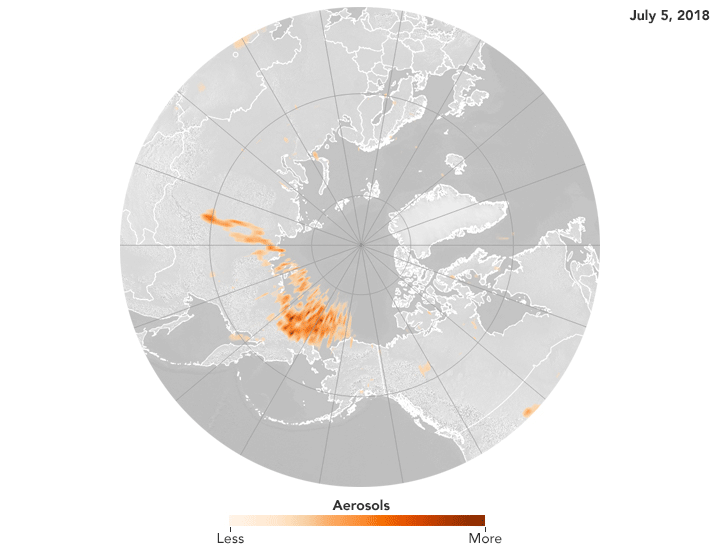Mysterious Substance and 'Devilry' Blamed for 3-Hour 'Solar Eclipse' in Russia
For the Russian republic of Yakutia (also called Sakha) — a chunk of Siberia that's home to the coldest cities in the world — July is a welcome reprieve from the seven-month winter that rampages from October through April. It's a rare time of year when locals can step outside without the risk of their spectacles freezing to their faces, a time when the merciful sun can hang in the sky for more than 20 hours a day instead of less than 2.
Imagine the confusion and disappointment, then, when locals in at least two districts of Yakutia stepped outside Friday afternoon (July 20) and saw the sun completely blotted out for 3 hours. [Photos: 2017 Great American Solar Eclipse]
According to the regional news site Yakutia 24, the Eveno-Bytantaysky and Zhigansky districts of Yakutia inexplicably plunged into 3 hours of mysterious darkness between 11 a.m. and 2 p.m. local time on Friday. Photos provided by bewildered locals show little more than the black shadows of trees and buildings cast against a reddish haze of sky. Adding to the ominous atmosphere, the air seemed to be thick with a grimy haze of black dust.
"It was impossible to be in the street," witnesses of the bizarre event told the news site Sakha Daily. Other locals reported that it was suddenly pitch-black in their homes, that the mysterious smog turned barrels of water into barrels of mud and that nearby lakes emerged from the eclipse covered in a filthy, black layer of pollution.
… Happy summer!
So, what was behind this mysterious dirty eclipse? While one local blamed the incident on "devilry," there is a likelier culprit: the multiple forest fires burning around Yakutia and elsewhere in Siberia, The Siberian Times reported.

As NASA's Earth Observatory reminds us, it's wildfire season in Siberia, and hundreds of fires have already burned tens of thousands of acres of forest since May. While most of these fires are hundreds of miles away from the dust-eclipsed towns in question, smoke and aerosols released by some of these fires have been tracked halfway around the world. One cluster of fires sparked on July 3 produced a smoke plume so massive that it traveled more than 5,000 miles (8,000 kilometers) in the span of 11 days, passing across northeastern Russia, through Alaska and into central Canada before beginning to weaken.
Get the Space.com Newsletter
Breaking space news, the latest updates on rocket launches, skywatching events and more!
Plumes this large can easily shade the land below and fill the air with polluting gases, NASA scientists wrote. However, as of today (July 23), no firm conclusions about the crud eclipse in Yakutia have been reached.
Siberia has its share of strange occurrences, from a bag full of severed hands that turned up in the snow in March to showers of gold bullion that rained from the sky. And industrial Siberia has some long-standing pollution issues (see the "blood rain" of industrial rust that fell on a factory parking lot just a few weeks ago), so this pollution blackout could easily be due to a combination of factors. Hopefully, devilry is not one of them.
Originally published on Live Science.
Join our Space Forums to keep talking space on the latest missions, night sky and more! And if you have a news tip, correction or comment, let us know at: community@space.com.

Brandon has been a senior writer at Live Science since 2017, and was formerly a staff writer and editor at Reader's Digest magazine. His writing has appeared in The Washington Post, CBS.com, the Richard Dawkins Foundation website and other outlets. He holds a bachelor's degree in creative writing from the University of Arizona, with minors in journalism and media arts. He enjoys writing most about space, geoscience and the mysteries of the universe.











